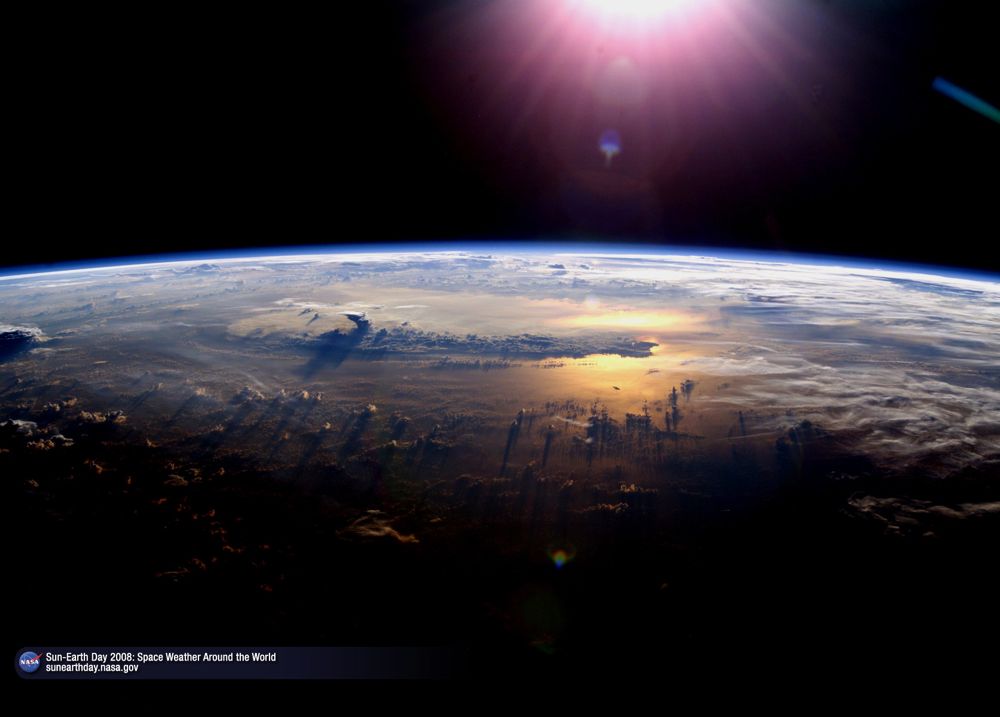The proposed budgets for NASA for fiscal year 2012 – including the full amount requested for the embattled James Webb Space Telescope, a planned next-generation space telescope – passed in the U.S. Senate on November 1, 2011. The U.S. House of Representatives passed its version of the budget in July, 2011. Now the two governing bodies must reconcile their differences before NASA’s budget can be signed into law.
It is the Commerce, Justice, Science and Related Agencies (CJS) Appropriations budget that includes detailing funding for NASA and other science agencies.
The Senate version of the bill gives $17.9 billion to NASA, which is about $5 million less than last year and almost $8 million below the agency’s request. The House bill delegates $16.8 billion to the agency, which is $1.6 billion last than last year and $1.9 billion below agency request. The Senate also delegates the full requested amount of $5.3 million for the James Webb Space Telescope, while the House cuts funding to the project entirely.
At the heart of the budget debate is the increasing realization that NASA has consistently overrun project budgets and deadlines. As the Senate bill notes, the space agency has been on the Government Accountability Office’s (GAO) “high risk” list for more than 20 years. The House bill focuses on science and education at NASA and seeks to cut James Webb as an example, while the Senate bill sets out restrictions and tightens oversight on NASA with the goal of setting the space agency straight for future missions.
The House summary reads:
NASA needs to develop and pursue new and different ways of operating that will promote efficiency and economy; annual budget increases can no longer be counted on as the means for achieving new mission goals. The new reality of constrained budgets, however, does not mean that NASA cannot or will not continue to make significant achievements in science, exploration and other areas. The Committee’s fiscal year 2012 recommendation supports high priority research missions; maintains aeronautics research and testing activities; [and] formally establishes a new program to develop next-generation space technology. . .Although JWST is a particularly serious example, significant cost overruns are commonplace at NASA, and the Committee believes that the underlying causes will never be fully addressed if the Congress does not establish clear consequences for failing to meet budget and schedule expectations. . . . The Committee believes that this step will ultimately benefit NASA by setting a cost discipline example for other projects and by relieving the enormous pressure that JWST was placing on NASA’s ability to pursue other science missions.

Meanwhile, here is the Senate’s stance:
From the outset, this Committe has sought a human spaceflight program that the President, the Congress and the American people can support. The committee believes that the restructured program called for in this act should be sustainable from one administration to the next. The United States cannot reinvent its space program every 4 years. In the wake of the retirement of the space shuttle, the Committee believes this bill represents a solid path forward for human spaceflight that can reach beyond low Earth orbit with affordable crew and launch vehicles, consistent with Public Law 111-267; invests in the burgeoning commercial launch industry that is poised to bring cargo, and eventually crew, to the ISS; and revitalizes NASA science and technology programs. These elements should be viewed as complementary pieces of a balanced whole. . . . NASA has submitted a new baseline of JWST with an overall life cycle cost of $8,700,000,000. NASA has assured the Committee that this new baseline includes adequate reserves to achieve a 2018 launch without further cost overruns. The Committee intends to hold NASA and its contractors to that commitment, and the bill caps the overall development cost for JWST at $8,000,000,000.
After a 2010 independent review of the James Webb forced NASA to reorganize the project’s management and re-examine its budget, the agency set more realistic cost goals and an achievable launch date of 2018. The amount requested from NASA, and granted by the Senate bill, ensures this launch date. Without the full amount, the launch will likely be postponed further, resulting in more budget increases. The Senate bill’s cap of $8 billion seeks to prevent further cost overruns (to clarify, the $8.7 billion includes seven years of operations costs, as well as other costs such as data archiving).
At a press conference in Baltimore, Maryland on October 26, U.S. Sen. Barbara Mikulski (D-Md.), who chairs the CJS Appropriations Subcommittee in the Senate, said she hoped the reconciled budget would be on President Obama’s desk, ready to sign, by Thanksgiving.
Bottom line: A proposed budget for NASA for fiscal year 2012 – including the full amount requested for the embattled James Webb Space Telescope, a planned next-generation space telescope – passed in the U.S. Senate on November 1, 2011. The U.S. House of Representatives passed its version of the budget in July, 2011. Now the two governing bodies must reconcile their differences before NASA’s budget can be signed into law.
Baltimore hosts full-size James Webb Space Telescope model
James Webb Space Telescope in financial limbo, but science pushes on











